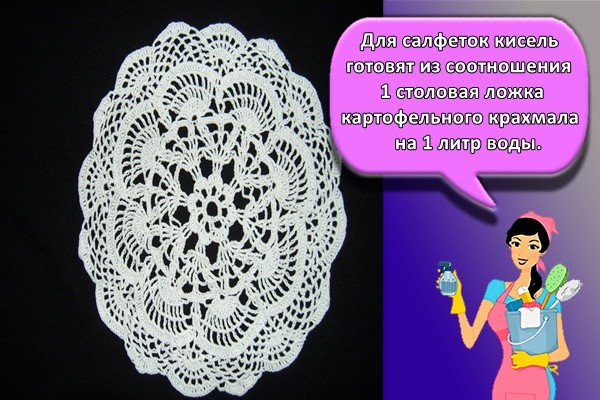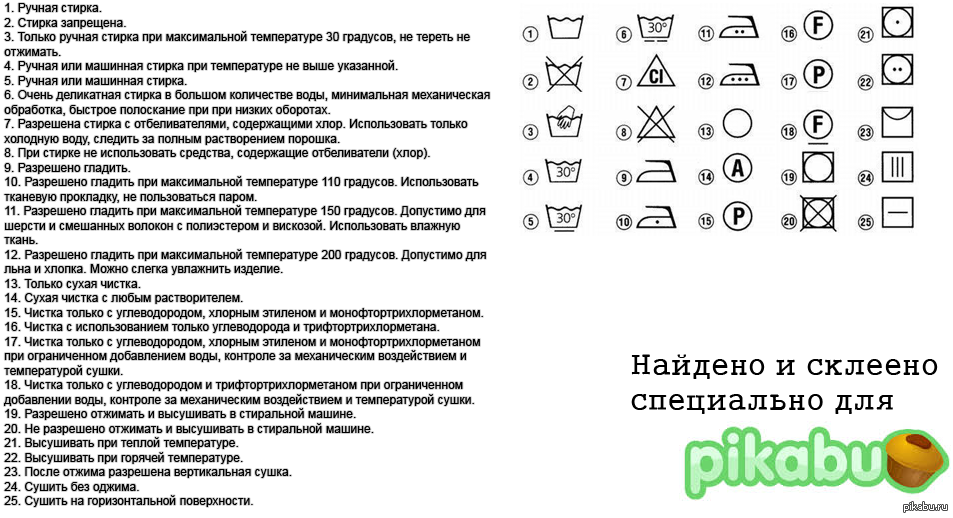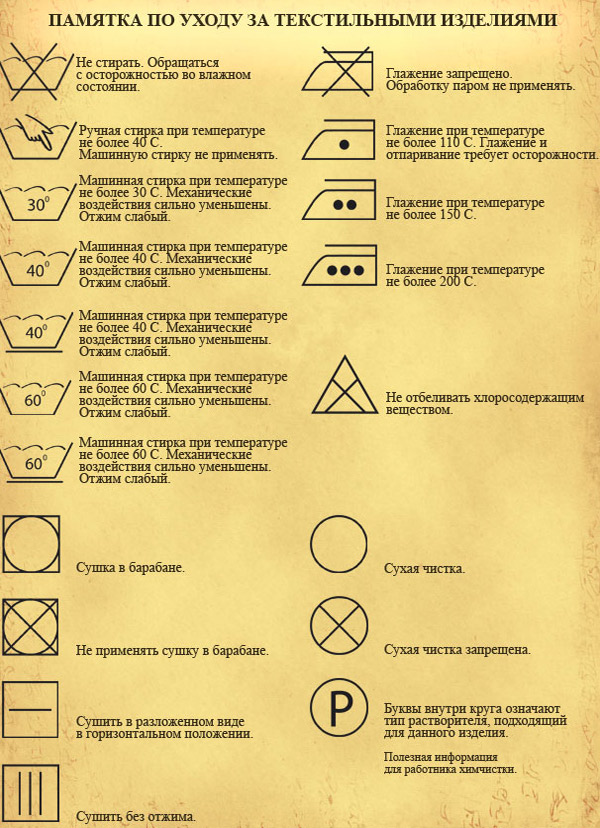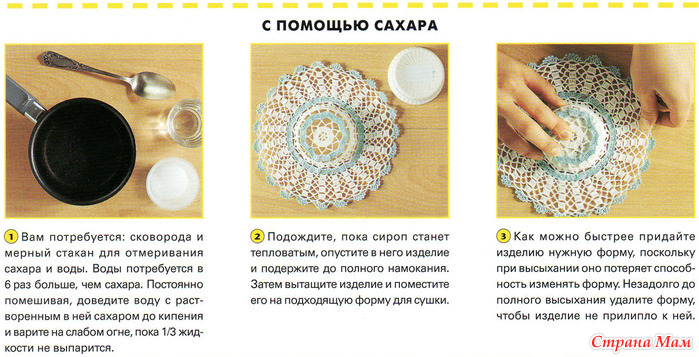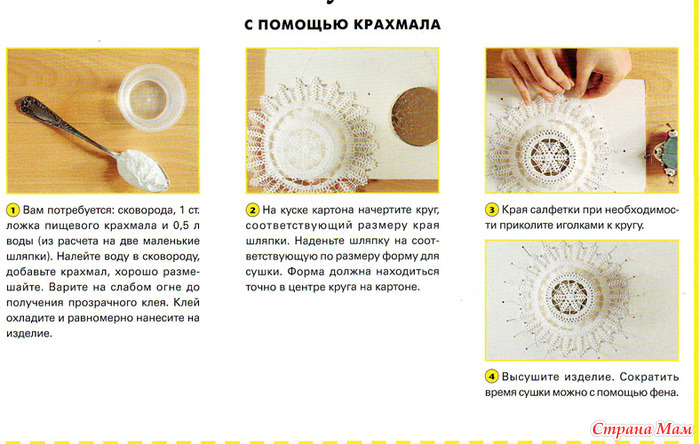Why starch textiles, and when you shouldn't
In the process of starching the fabric, its fibers are impregnated with polysaccharides. The thinnest film is formed on the surface of the threads, which increases their density and elasticity. As a result of starching, the textiles keep the given shape well, bleach, wrinkle less and “creak” when touched. In addition, the products stay clean longer and are easier to wash, since the starch film repels dirt and does not allow it to penetrate deeply into the fibers.
The disadvantage of starching can be attributed to the fact that it reduces the breathability of the fabric. It is not recommended to process:
- summer clothes (it is advisable to starch only individual parts);
- underwear (it can get hard and cause discomfort);
- dark products (starch can change their shade);
- synthetic fabrics (the solution is not fixed on their fibers);
- things embroidered with floss threads (they can stick together and lose their shine).
Basic ways
There are several known methods of processing a material using starch. Different methods allow you to achieve different stiffness of the material and therefore are used depending on the purpose of the product.
 Potato starch is used to shape things.
Potato starch is used to shape things.
A little stiffness is required for linen or clothes made of delicate fabrics: women's blouses, scarves, dresses.
The medium hardness method is required for processing men's shirts, shirts, napkins, curtains or tablecloths. In this case, the starch gives the thing a rigid shape, for example, collars, but at the same time retains the properties of the fabric to bend.
 Cornstarch is also used to starch things.
Cornstarch is also used to starch things.
The rigid method is suitable for cases when the material needs to be given a specific shape. That is, to make the fabric stand. It is used to make artificial flowers, decorative items from fabrics, knitwear, lace.
 White things look beautifully starched.
White things look beautifully starched.
When asking how to starch lace at home, it is the tough method that is used. Using this method, you can easily make a fluffy crinoline petticoat or a children's crown from fabric or lace.
Regardless of the kind of starch, it creates a shape for things.
Different types of starch are used for processing fabrics:
- Rice bleaches things best.
- Corn is less thick and therefore less stiff than other types.
- Potato. It is the cheapest and therefore the most common.
The gentle way
To understand how to properly starch laundry, you must first study the instructions for the gentle method. Consistency calculation: 1 small teaspoon of starch per liter of water. Dilute starch very carefully. This substance sticks together easily in water. Therefore, at first, it is slowly dissolved in a glass of cold water.
 You need to know how to prepare a solution with which you can starch things.
You need to know how to prepare a solution with which you can starch things.
You do not need to fill in the whole teaspoon at once, otherwise lumps will form. It is necessary to gently shake off the starch onto the surface of the water and then stir. After the solution is ready, you need to boil clean water in a saucepan.
 Use potato starch for the best results!
Use potato starch for the best results!
When it boils, reduce the heat and gently pour the starch into the container with a thin stream. In this case, it is necessary to constantly stir the solution. Then the fire should be turned off and wait for the agent to cool down to a temperature of 40-45C. This is the hot water temperature.
It is necessary to immerse the thing in such a solution, rinse it slightly in it so that the product is distributed over the fibers, pull it out and squeeze it out.After that, the thing must be dried.
Average way
The average method of how to starch fabric at home according to technology does not differ from the soft method. The main difference here is consistency.
 Medium can be used to starch thick fabrics.
Medium can be used to starch thick fabrics.
The proportions of the composition of medium hardness will be as follows: 1 standard tablespoon without top per 1 liter of water. It is also necessary to stir the substance very gently in a glass of water and then pour it into heated water.
 Use starch to shape things.
Use starch to shape things.
Things need to be dipped in a basin or bucket of solution and kept there for 3-5 minutes. In this case, it is necessary to slightly stir the composition. This is necessary in order for the starch to better penetrate into the fibers and be absorbed into them.
The hard way
How to starch fabric at home in a tough way should be taken apart in particular detail. Since this is the most difficult method of fabric processing. It involves not only impregnation with a solution, but also shaping things.
The classic method of preparing a solution: 2 tablespoons of ordinary spoons per 1 liter of water. The solution is prepared in the usual way.
 A high degree of starching of things is suitable for things that are made of coarse fabrics.
A high degree of starching of things is suitable for things that are made of coarse fabrics.
Option of a solution with borax. A solution with starch is also prepared. 1 teaspoon of borax is dissolved in a glass of boiling water and then added to the starch solution. After preparation, the mixture is infused for 20 minutes. After that, the thing can be starch.
 After starching things, they need to be ironed,
After starching things, they need to be ironed,
You can starch a thing in different ways. The product can be dipped into the solution, let the solution soak. For this, the thing must be kept in it for about 20 minutes. This is done with crinolines, decorative elements - that is, products that must be completely starched hard.
 Before starching things, they need to be washed.
Before starching things, they need to be washed.
After that, they are pulled or fixed on a certain shape. When the substance solidifies, they will retain this shape. Starching of individual small parts is also possible: collars, cuffs. Then there is no need to dip the thing into the solution. You can apply the product with a wide brush.
Other recipes with starch
There are several more recipes for starching things using starch:
- Spray can. Suitable for single elements and colored fabrics. Combine 1 liter of warm water and 1/4 of a small spoonful of starch, boil for 5 minutes and cool. Pour the solution into a spray bottle and process a dry cloth, then iron it. This aerosol can be purchased ready-made.
- Gloss-starch. Gives products not only shape, but also shine. It is required to mix rice starch, talc and borax powder in a ratio of 5: 3: 1, then add a little cold water. A napkin is moistened in the solution, with which the thing is then processed. Next, the product needs to be ironed.
Means for starching things
To preserve the excellent appearance of the thing as long as possible, as well as to keep it in shape and be as bleached as possible, you can use such ingredients for starching.
Starch
Before using it, we need to determine what rigidity the treatment we need. Next, prepare a solution of rice, potato or corn starch. In a container, mix starch with a small amount of cold water, then take a second container, pour the solution into it and, stirring it, pour in boiling water.
Good to know! If further it is necessary to add blue, then the solution must first be filtered so that no lumps form in it. If a harsh starching method is used, then the solution can be boiled several times so that it becomes as cloudy as possible, and not completely transparent.
Then we send the thing into the resulting mixture for a while, after which we squeeze it out. If the thing is absolutely white (for example, a scarf), then the starch can be mixed not with water, but with milk.
Sugar syrup
Pour 400 grams of sugar with water, stirring gradually.We put the solution on fire, and bring to a boil until the Sugar is completely dissolved. Then we put the thing in the resulting solution, soak it as much as possible, and then squeeze it out.
If, after the procedure, part of the product is not completely starchy, then it is worth repeating it. Or use an ordinary brush, as it were, "painting" a knitted thing. If it was not possible to achieve the required rigidity, the process is repeated.
Having wrung out the thing, straighten it, pin it to a clean cloth with pins, then lay it out on a horizontal flat surface, and send it to dry in a warm, well-ventilated place.

PVA glue
To obtain a solution, glue and hot water are mixed in a ratio of 1 to 1 or 1 to 2. Then the mixture is poured into a spray bottle for liquid, the product is thoroughly sprayed. You can also pour liquid into a bucket and send the little thing into it.
Milk
In most cases it is used for starching products from light fabrics.
But, it is important to take only skim milk. You can also add starch itself to it to achieve a thicker consistency.
Gelatin
1 tbsp. l. gelatin is diluted with 200 ml. cold water, and left to swell. After that, another 200 ml is added to the container with the substance. boiling water, put to the side, until completely dissolved.
You can also take a whole bag of gelatin, add 1 tbsp. l. table salt, and pour the solution into a jar of 0.5 with hot water. Then wait until the mixture is completely dissolved.
In both the first and second versions, the product is immersed in a completely cooled solution. A garment starched in this way will perfectly keep its shape until the next wash.
Glossy starch
You can buy it ready-made, or you can cook it yourself. In addition to stiffness, this substance is capable of giving a glossy shine to any thing. Therefore, it is useful for the most elegant things, as well as tulle with curtains.
Recipe. The substance is composed of wheat or rice starch, white talc, and borax powder. The proportions are 5 to 3 to 1. You can take rice starch, borax, boric acid in a ratio of 8 to 10 to 2.
Each of the substances is thoroughly mixed, then diluted into a slurry with cold water, and applied to the product with a sponge. After ironing, the item becomes shiny and durable.
How to starch a knitted napkin
First, you need to determine the material from which the napkin is knitted. The most commonly used are cotton, pehorka and viscose. And for all materials, the methods are different.
Secondly, if the threads of the napkin are thick, then it should be kept in the substance for 15 minutes. If the average is no more than 10. Very thin - 5 minutes.

Let's take the simplest recipe - water and starch (any). Now let's use the recipe:
- 1 tbsp. l. pour starch into a container of the required size;
- Add a little bit of cold clean water to mix the substance until smooth;
- Fill with a liter of boiling water;
- We put on fire, boil for 5-10 minutes, until we get a homogeneous mass without lumps, cloudy in color;
- We lower our product into a container, wait;
- We take out a napkin, put it on a flat surface, wait for it to dry completely.
This recipe is versatile and can be used for all types of starch and knitwear.
Another recipe:
- 3 tbsp. l. dissolve sugar in 200 ml. boiling water;
- Add starch to 1 liter. water, stir;
- We connect with all, mix again;
- We lower the product into the container.
Dry method of starching napkins
Also a rather uncomplicated and simple method:
- We put our napkin on clean paper;
- Sprinkle a little starch on the product;
- Sprinkle with water (evenly);
- Cover with another sheet of paper and wait 2 hours;
- Ready!
Good to know! When drying such a napkin, you should take a large white Whatman paper. It is better not to use newspapers and other types of paper.

What products cannot be starchy?
Not every thing can be processed with starch. Here are the products that are not suitable for this:
- Underwear, as the starched fabric is poorly breathable and does not allow the skin to breathe. In addition, harsh items of laundry can chafe and cause discomfort.
- Summer outdoor clothing. A person should feel comfortable in hot weather, the starch will make the fabric too dense. It is a good idea to starch only certain details, such as the collar or frills on a sundress.
- Black products - cloudy stains will appear, you will have to wash your clothes again.
- Synthetic fabrics, it is useless to starch them, the thing will remain as soft.
- Embroidery made by floss. The concentrated solution will glue the threads together, the work will look sloppy. Alternative methods are used to starch the embroidery.
How to properly starch things
Before proceeding directly to the main process, the textiles must be washed and rinsed well. The procedure for starching is as follows:
- Place a clean, damp or dry cloth in a warm solution with a certain concentration of starch.
- Let the mixture spread between all the folds of the fabric.
- The residence time of the tissue in the basin is determined by its density and the desired effect. The denser the material and the more rigid you want to make it, the longer you need to hold it. For silk clothes, 1-2 minutes is enough. Cotton fabric can be held longer - 10-15 minutes.
- Take the thing out of the basin, squeeze it gently and send it onto the rope to dry, straightening it well. When the fabric is dry but slightly damp, iron it with a warm iron.
Any kind of starch is suitable for the preparation of a starch solution. Most housewives prefer potato, because it is easy to find it and it costs nothing at all.
The concentration of the solution is determined by your goals, as well as the type of fabric from which the items are made. There are such methods: soft, semi-hard, hard. Each method has its own characteristics and is suitable for certain purposes, which I will discuss below.
The gentle way
This method is used in order to give elasticity to things without making the material hard to the touch. This method is great for items made of silk, cotton, chiffon, cambric. As a rule, bed linen, dresses, blouses, shirts, tulle, etc. are subjected to soft processing.
How to prepare a mild starch solution:
- You will need 1 teaspoon of starch per liter of water.
- First, mix it with 200 ml of cold water. Stir well to avoid any lumps in the mixture.
- Boil the remaining 800 ml of water.
- Pour the prepared cold mixture into boiling water, stirring constantly.
- Turn off the heat, let the solution cool.
As a result, you should get a homogeneous liquid, a bit like jelly. I did something similar when I was “composing” finger paints for my son.
Still, lumps formed? Filter the solution through cheesecloth or a sieve. Do not be too lazy to do this, as these lumps may not in the best way affect the end result of starching.
Semi-rigid way
Want to quickly tidy up furniture covers, curtains, tablecloths, napkins or lace on your clothes? Feel free to use semi-rigid treatment.
The mixture required for this procedure is prepared in the same way as a soft solution. The only difference here is that you need 1 tablespoon of starch per liter of water. Increasing the concentration will also make the mixture a little thicker. However, if it turns out to be too thick, you can dilute it with a little lukewarm water.

Hard
What kind of things are usually tough to handle? These are all kinds of decorative textile items, petticoats, tutus, knitted boots, cuffs, collars, knitted bags, etc. That is, those items that need to be processed in such a way that they stand and do not lose their shape.
You can use our previous recipes to prepare the mixture required for tough processing. But in this case, we will increase the concentration of starch to 2-5 tablespoons per 1 liter of water.
For this purpose, you can prepare a slightly different solution:
- Dissolve 50 g of starch in 200 ml of cold water.
- Next, dissolve 1 teaspoon of borax (aka sodium boric salt) in 200 ml of hot water. Wait for the liquid to cool down and proceed to the next step.
- Boil 600 ml of water. With constant, slow stirring, pour in the starch solution.
- Now add the borax solution to the resulting mixture.
- The solution can be used after 2 hours, but in the meantime you have time to prepare clothes or do other household chores.
How bedding starch, clothes in a washing machine

To starch things in the washing machine, you need to add a small amount of sticky liquid to the fabric softener compartment and start the usual wash cycle.
Ready-made starching compounds are sold in household chemical stores - some are applied to the fabric before ironing, others during washing. Starching bedding, linen in a washing machine is as easy as shelling pears:
- to begin with, prepare a "soft" starch solution according to the above scheme;
- the composition is poured into the engine compartment for the air conditioner;
- the toggle switch of the washing machine is set to rinse;
- after the end of the process, the linen is taken out, shaken, dried;
- the machine is wiped from the inside, ventilated.
When starching in a washing machine, special synthetic fluids are often used, for example, based on polyvinyl acetate, which do the job just as well. Additionally, you should not use any air conditioners.

Starching agent that is added directly during the wash
For starching clothes, table linen from various types of fabric, a solution of the desired composition and concentration is prepared, poured into the machine, as described above.
Traditional way: starch
Using starch is an effective and proven method for years. For processing the product at home, you can take this type of starch: potato, wheat rice or corn.

If you need to starch the product strongly, take 2 tablespoons of starch, for medium processing, 1.5 tablespoons are enough.
Note! The choice of starch will determine its proportion for the preparation of the mixture. Consumption of corn starch is twice that of potato
Rice and potato starch are approximately the same consistency.
The concentration of the paste will depend on the degree to which you want to starch the prepared wipes. In total, three degrees can be distinguished: light, medium and strong. The napkins and tablecloth should be medium enough. They are prepared as follows: light - one teaspoon per liter of water; medium - one tablespoon per liter of water; strong - two tablespoons per liter of water.

Take a napkin and immerse it all in the solution, wait until the paste is absorbed into the napkin.
Before starching, wash and bleach the product, then dry the napkin well. The preparation of the classic mixture using starch can be divided into several stages.
- Dissolve starch raw materials in cold water, make sure there are no lumps, mix thoroughly.
- Prepare a pot of water. Put it on fire and wait until it heats up to 100 degrees.
- When the water boils, slowly pour in the prepared solution, stirring gently, you can add a pinch of salt to shine.
- After the mixture turns into a homogeneous paste, remove the pan from the heat and cool the mixture.
- Moisten the napkin with water before starching.
- Dip the product in the paste for 10 - 20 minutes, depending on the desired degree of hardness.
- Take out and remove excess paste from the napkin.It is better to lay out the product after processing on a flat surface, and not hang it out.
- When the napkin is dry, iron it through cheesecloth to avoid yellow streaks.

After drying, the napkin must be steamed with an iron.
Attention! It is very important to take clean starch, without debris. If you notice small particles in the starch, fill it with water for several hours, let it brew, the debris will float to the surface
Why do you need to starch
Any fabric, even the densest, can lose its shape after washing. But for napkins used in table setting, in most cases, soft, light fabrics are used. The same applies to openwork knitted products, with which many needlewomen like to decorate the interior, laying them out on dressing tables, armchairs and other furniture. Not only thin cotton or viscose threads, but also a peculiar pattern make such napkins very vulnerable to wear and tear.

Starched napkins keep their shape and stiffness well
It is very important to give such a product density, hardness and elasticity at the same time. This is necessary so that the napkin will surely take the shape you need. For example, a starched cloth napkin when setting the table can be laid out in one of several traditional options: "Lotus", "Sailboat", "Lily", "Everest", "Exquisite Fan"
But at the same time it is necessary to strengthen the fabric so that it does not lose its softness.

Linen napkin folded in the shape of "Lotus"
A knitted napkin, starch, can even be turned into a vase or basket for sweets or cookies.

Crochet napkin vase
It is for this purpose that starch is used. The level of action of the active substance in this case can be different, depending on the required hardness, type of fabric and even color. Traditionally, white products from flax and cotton are starch. Colored dyed threads are also easily tolerated by agents such as starch and sugar.
It is also better not to starch products made of black threads and fabrics: any product will leave whitish spots on them. Synthetic and wool products are also resistant to starch. In such cases, it is better to use special chemicals or even seek professional help, such as dry cleaning.
Manual starching instructions
In order to prepare a starch solution, you will need: starch, water, a boiling container (saucepan).
Technology:
- Mix the starch with a little cold water (½ to 1 cup), you should get a homogeneous "starch milk".
- Bring 1 liter of water to a boil, add the mixture diluted at the first stage to the pan.
- Stirring continuously, keep the solution on low heat for no more than 5 minutes.
- If the starch paste is too thick, dilute it with a little warm water (the liquid should be slightly denser to the touch than water).
- Cool the solution to a comfortable temperature for rinsing (depending on the type of fabric).
- Rinse clothes (linen) in "starch milk" or soak for 10-15 minutes. Alternatively, use a spray bottle.
- The fabric should be well saturated. Allow excess water to drain, and do not twist or wring the garment.
- Dry your clothes flat. Hang dresses, shirts on "hangers".
- You can iron starchy things dry (do not overdry, otherwise it will be difficult to iron out all the folds) or slightly damp.

The solution should be white and slightly thicker in consistency than water, but not gray or dirty
Basic rules and what to cook for starching
Before you start starching the napkin, you must:
Wash. To do this, it is better to soak knitted products in warm water with the addition of detergent for hand washing.
Rub a little with gentle movements.
Rinse well. If the napkins are made of natural fibers, you must remember: they can shrink, so it is better to use warm water
You should be especially careful with woolen products.
If there are several napkins, they can be machine washed. After rinsing, it is recommended to start starching. The duration of the procedure largely depends on the thickness of the yarn. If it is thin, then the napkin is placed in the prepared paste, this procedure lasts about 5 minutes, when thick yarn is used, the time is 10 minutes.

Wash the crocheted napkin before starching it.
Then the product is lightly squeezed out and laid out on a flat surface for drying. It must be remembered: only when the product is not completely dry, and a slight dampness will be felt in it, you can give the napkin the necessary shape.
You can starch a crocheted napkin, both with starch and other household components, but before the procedure itself, you need to prepare:
- pins with heads: that is, with beads at the end;
- edge straightening wire;
- ruler;
- a bowl for solution;
- spray;
- white paper;
- a towel or white sheet;
- wide brush;
- drying surface;
- form for bulky products.
Basic ways
When figuring out how to starch a fabric with starch, you should know that the essence of the process is to soak textiles in a solution of plant materials and water. You can use a processed product of potatoes, corn, rice or wheat. The most commonly used potato starch. It is inexpensive, gives things a bright white color and thickens well.
Before starching, the fabric should be washed and rinsed thoroughly. It can be wet or completely dry before dipping into the solution. Depending on the concentration of the mixture, three processing methods are distinguished:
- Soft. Allows you to give the product elasticity, but does not make it hard to the touch. Suitable for bed linen, blouses, chiffon, batiste, silk dresses.
- Average. Provides the opportunity to create a certain shape and refresh textiles. It is used for tablecloths, napkins, men's shirts, furniture covers, curtains, lace, flounces.
- Hard. It is necessary if the question arises of how you can starch the fabric so that it stands. Used for petticoats in lush dresses, cuffs, collars, decorative textile flowers.
In addition, the starching effect can be obtained without the use of starch. For these purposes, gelatin, sugar and glue are used.
Soft way for bed linen and tulle
Solving the problem of how to starch the laundry, let us consider in detail a soft method of processing. The solution is prepared at the rate of 1 teaspoon of starch and 1 liter of water.
Stages:
- Pour starch into a small container and pour 150-200 ml of cold water. Stir thoroughly so that there are no lumps.
- Boil the rest of the water. Pour in the concentrated starch solution with constant stirring. Turn off the fire.
- Cool the liquid to room temperature. It should be transparent and leave a slippery mark on the skin if you put your hand into it.
- Pour the starch solution into a basin and immerse the bedding in it for 1-2 minutes to soak it.
- Take out the fabric, wring it out and shake it off. Hang to dry. If possible, remove all creases and folds.
In addition, a mild solution can be used if there is a problem, how to starch the tulle or curtains to make them look more elegant. Read how to bleach tulle in a separate article.
Stages:
- Combine starch with water according to the scheme described above.
- In the chilled solution, lower the tulle for 30 minutes.
- Pull out the fabric. Squeeze out the liquid.
- Iron the tulle when it dries a little, but is still damp.
Medium for laces, napkins, shirts, school aprons
A medium-hard starch solution is made from 1 liter of water and 1 tablespoon of raw materials. The process of preparing the mixture is similar to the previous method. The result is a translucent homogeneous liquid "jelly".If the solution is too thick, add a little warm water to it and stir thoroughly.
The further algorithm of actions depends on the type of tissue. It is enough to dip tulle and other thin materials in starchy liquid for a few seconds, lace and openwork napkins - for 20 minutes, tablecloths, table napkins and shirts - for 10-15 minutes.
If you need to starch a separate piece of clothing (shuttlecock, lace), you can prepare a solution and grease the decor with it with a piece of cloth or a sponge. After 10-15 minutes, the treated fragment should be covered with gauze and ironed with a warm iron.
Hard way for gauze, collars, cuffs
Let's figure out how to starch the fabric strongly at home so that it keeps its shape well. The solution can be prepared according to the previously described algorithm from 1 liter of water and 2 tablespoons of starch, or you can use another recipe.
Components:
- 1 liter of water;
- 50 g starch;
- 1 teaspoon of borax, or sodium boric salt, available over the counter.
Preparation of a solution for hard starch:
- Dissolve the starch in a glass of cold water.
- Dissolve borax in a glass of hot water. Cool to room temperature.
- Boil the remaining water. Stir constantly, pour the starch into it.
- Add borax solution to the starchy "jelly". Wait 2 hours.
Consider how to starch gauze, if a petticoat is made of it, and you need it to add splendor to the dress:
- Dip the product into a starch solution.
- Once the fabric is completely saturated, remove it, wring it out and allow it to dry slightly.
- Iron the cheesecloth, straightening the wrinkles, while wet.
To starch the cuffs and shirt collar, only these elements need to be dipped into the solution. After 20 minutes, they should be removed, squeezed, dried and ironed thoroughly.
How to starch items from different types of fabric
Knitted fabric is also processed gently, but it should be dried exclusively on a horizontal surface, otherwise the product will stretch and lose its shape. For knitted products, giving them rigidity, it is recommended to process them with a gelatin mixture:
- a large spoonful of gelatin is poured with half a glass of water, heated in a water bath until completely dissolved;
- then add another glass of water;
- the product is impregnated with the resulting solution.

Ready gelatin solution - express starch
This composition is also used for lace napkins, textile flowers and other similar decor. For processing dark or colored fabrics, starch is unacceptable, as it leaves a whitish stain. An adhesive composition is recommended for such fabrics:
- depending on the purpose of the textile material, soft or hard processing is performed;
- for soft processing, PVA glue is diluted with warm water in a one-to-one ratio, for a hard version - in a two-to-one concentration;
- the fabric is placed in a solution, after complete soaking, it is removed and squeezed out.

You can starch clothes with PVA glue, for this you need to dilute it with water
This method is not suitable for underwear, overly large items. There is also a sugar syrup treatment:
- six to seven tablespoons of sugar are boiled in a liter of water;
- textiles are placed in a hot solution, impregnated, wrung out;
- there is one drawback - the "sweet" fabric will attract insects.

You can also starch things with plain white sugar.
To starch the most delicate silk fabric, a solution of gelatin, silicate glue is suitable - in this case, dilute one spoon per five liters, soak the product, squeeze it a little. After processing, silk acquires elasticity, beautiful shine.
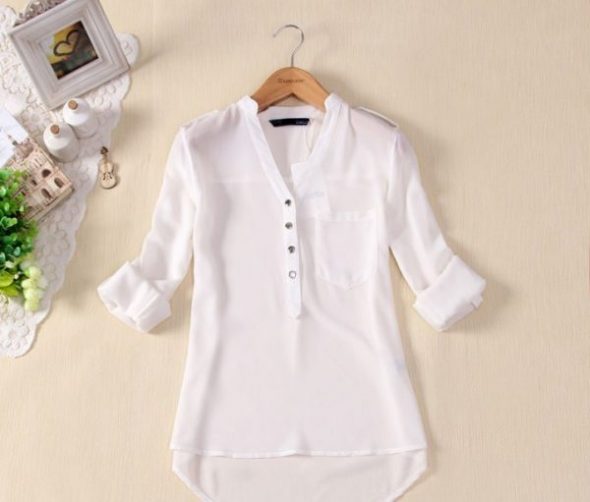
When you need to starch a thin and delicate fabric, use a weak solution
Tulle is used for sewing elegant dresses, ballet tutus. It will require a medium-hard starch solution - two teaspoons per liter of water. The product is thoroughly soaked, removed, straightened.

For stiffness, a petticoat requires two tablespoons of starch per liter of water
Multilayer gauze products are processed in the most severe ways - at least two large spoons of starch and a small spoonful of sodium boric salt are added to one liter of water, the product is immersed in it, and when it is sufficiently saturated, squeeze it out.
You can starch knitted napkins, a school white apron with numerous laces, you can use a medium-hard solution.

Openwork products made of fine yarn are kept in starch liquid for 5-10 minutes
The product is pre-washed by machine or by hand, put in a starch mixture for twenty minutes, taken out, there is no need to wring out the apron. Alternatively, a freshly washed apron is simply sprayed with a solution from a spray bottle or blotted with a wet starch cloth.
The canvas for embroidery is starch, in order to simplify the process of embroidery on it. To do this, the textiles are placed in a hard solution of starch for about fifteen minutes, squeezed well. The already embroidered fabric is pre-washed, impregnated with a medium-hard composition for no more than fifteen minutes.
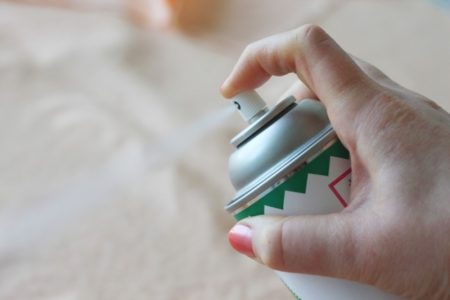
For starching expensive fabrics with a bright saturated color and complex texture, it is better to use a ready-made product.








